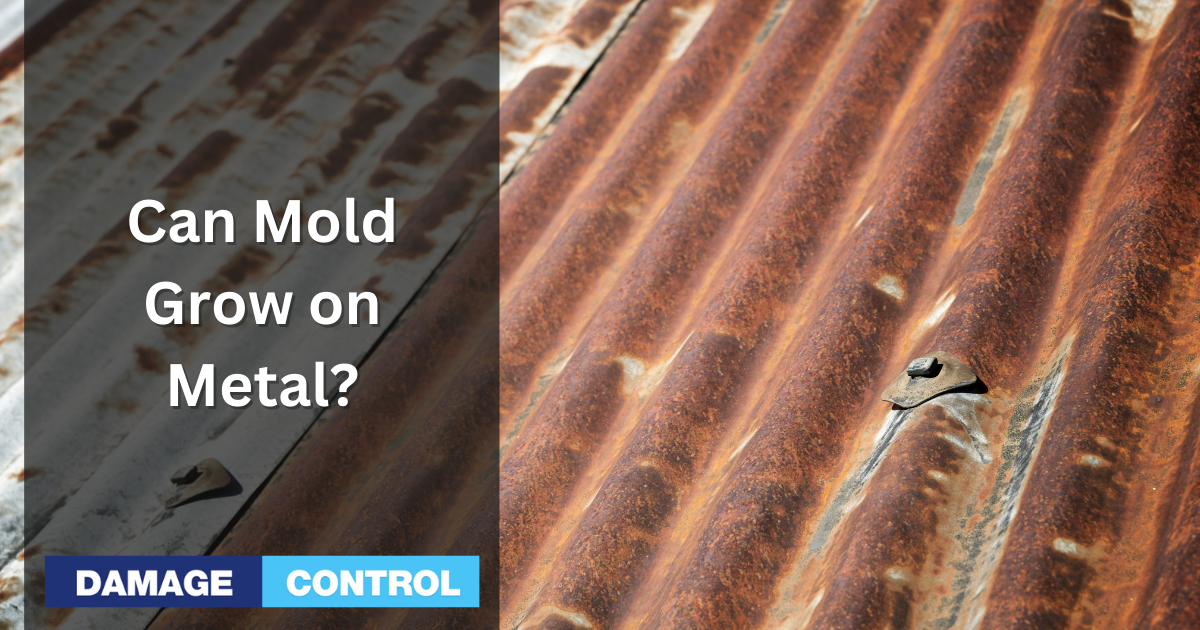When you think about mold, you probably think about a dark splotchy substance that adheres to drywall, or wood. However, there seems to be a misconception among some people about when and where mold is able to grow…
Some people are under the misconception that mold is incapable of growing on surfaces such as metal. The truth is that mold is capable of growing on metal so long as the right conditions are in place. Mold cannot use metal as a food source, but it can use anything that settles on it as a food source, such as dust or other debris. This is how mold can grow in HVAC ductwork.
Here we will learn more about what mold needs to grow and whether or not mold can grow and thrive on metal. Let's begin.
What Does Mold Need to Grow?
There are only two things that it needs to thrive, survive, and grow. Those two things are moisture and nutrients. Without those two things, mold cannot survive or spread.
Does Mold Grow On Metal?
If you want to know whether or not mold grows on metal, the short answer is yes—however, other factors at play need to be considered when discussing mold growth on metal.
You need to understand that just because mold grows on metal, that does not mean it is eating away at the metal like it would on other surfaces such as wood, carpet, or drywall. Mold is not corrosive enough to penetrate most metal surfaces, particularly steel.
Factors That Affect Mold Growth on Metal
Humidity
As previously said, mold requires moisture to be able to grow. One of the most common sources of moisture that mold needs that can be found on metal is humidity.
Humidity leads to high levels of condensation buildup. Condensation is enough moisture to cause mold growth to develop. Metal is particularly prone to condensation build-up as temperatures fluctuate.
Temperature
It needs to be understood that cold temperatures do not kill mold. Cold temperatures can only slow or stop its growth. However, it thrives in higher temperatures, but even mold has limits to its love affair with heat. Temperatures over 140 degrees can and will kill mold, but mold growth can accelerate below that.
Exposure to Organic Materials
Once its atmospheric needs are met, the mold must have a source of nutrients. The best source of nutrients for mold is any organic material. This is why mold grows on wood, dead vegetation, or other organic materials.
If the organic material is porous, then that is more beneficial for the mold because it allows it to penetrate further into the material.
How to Prevent Mold Growth on Metal
Avoid Humidity
One of the first things you can do to prevent mold growth on metal is to control the humidity of its surroundings. There are two ways to do this. The first thing you can do is ensure there is good airflow.
Good ventilation and airflow dry out the environment and rid mold of its moisture.
Clean and Dry Metal Regularly
Mold cannot eat metal. However, it can eat any grime or residue on top of the metal. For this reason, it is a good idea to regularly clean and dry any metal you are concerned about.
Doing this regular maintenance goes a long way toward preventing future mold growth on metal.
Use Protective Coating
Suppose you want to prevent mold growth on metal. In that case, one of the best things you can do is purchase a commercially available coating designed specifically to give the metal a protective coating. A protective coating is like a suit of armor for your metal. It locks moisture out alongside mold growth.
There are numerous different coatings on the market, so shopping around is a good idea.
How to Remove Mold From Metal Surfaces
Use Natural Cleaning Solutions
One of the first things you can do to get rid of mold on metal surfaces is to clean the surface thoroughly—natural cleaning solutions that discourage mold growth, such as diluted essential oils. For example, vinegar kills mold surprisingly well. Use a mixture of white vinegar and water.
A simple cleaning solution is so effective because the mold on metal is strictly surface mold. Because mold can only grow on metal, and not eat it, a simple cleaning will suffice.
Use Chemical Cleaners
If you want to be sure to eradicate the mold on your metal, then you want to use chemical cleaners designed to kill mold.
Many of these mold cleaning solutions include mold growth preventative coatings, meaning you do not have to worry about mold rearing its ugly head soon.
Conclusion
Mold is not exactly a threat to metal. While it can certainly grow all over it, it cannot do any damage.
However, that does not mean you should not attempt to remove mold when you find it on metal. Remember that mold can spread, so if mold is on a metal surface in or around your home, it is only a matter of time before mold spreads to the remainder of your home.

